Canon EF 400 mm f/4 DO IS II USM
4. Image resolution
Let’s check how the tested Canon 400 mm DO II compares – its results in the frame centre on the edge of the APS-C/DX sensor and on the edge of full frame presents a graph below.
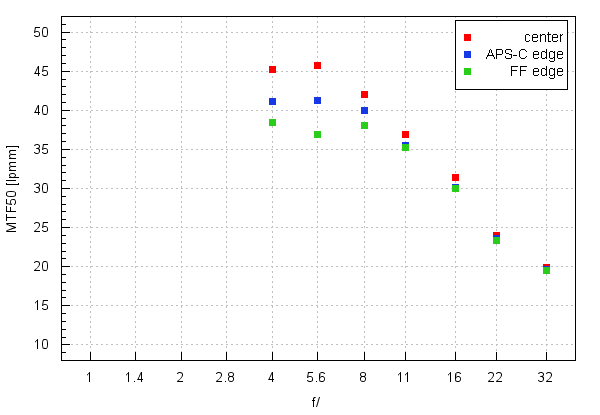
Please Support UsIf you enjoy our reviews and articles, and you want us to continue our work please, support our website by donating through PayPal. The funds are going to be used for paying our editorial team, renting servers, and equipping our testing studio; only that way we will be able to continue providing you interesting content for free. |
- - - - - - - - - - - - - - - - - - - - - - - - - - - - - - - - - - - - - - - - - - - - - - - -
The performance in the frame centre is brilliant. Already at the maximum relative aperture the lens is able to get to 45 lpmm and on stopping down the aperture to f/5.6 the MTFs increase even more, to 45.7 lpmm. These are, within the margin of error, the same values as those presented by the Canon EF 300 mm f/2.8L IS USM II. If there are no visible difference it means DO technology doesn’t bring any serious limitations concerning resolution.
The performance on the edge of the APS-C sensor can also be described in superlatives only. In the aperture range from f/4.0 to f/8.0, used most often when it comes to this kind of equipment, you get to 40 lpmm or higher meaning the image quality might satisfy even the fussiest and most demanding users.
The edge of full frame we find beyond reproach too. Results over 35 lpmm, which you can observe from f/4.0 to f/11, mean images of at least good quality.
Now let’s check how the tested lens fares when joined with the Canon TC 1.4x III teleconverter – an appropriate graph is presented below.
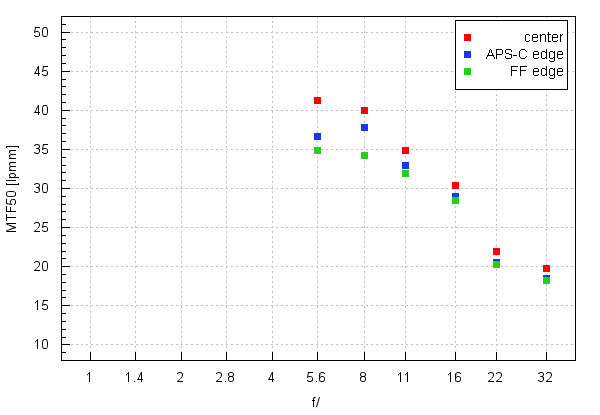
You can notice resolution decrease compared the performance of the bare lens but it’s perfectly understandable because the maximum relative aperture changes as well and another optical element appears in the whole system; that element has to cooperate not only with the tested lens but with the whole array of long-focus L-series instruments.
Still that decrease is not big so, in the frame centre, near the maximum relative aperture you get MTFs which still exceed 40 lpmm distinctly. We are happy to say the lens plus the teleconverter set won’t have any problem with delivering images of high quality.
On the edge of the APS-C sensor and full frame the results are lower but still notably above the decency level in a wide range of apertures. It seems taking photos with good image quality across the frame won’t be a problem here.
To sum up when it comes to the resolution, the Canon EF 400 mm f/4 DO IS II USM performs as it befits an expensive L-series instrument. It is able to provide an excellent image quality across the frame no matter whether you work with just the lens or you attach a teleconverter to it.
At the end of this part of the test traditionally we present crops taken from photos of our resolution testing chart which were saved as JPEG files.
| Canon 5D MkIII, JPEG, 400 mm, f/4.0 |
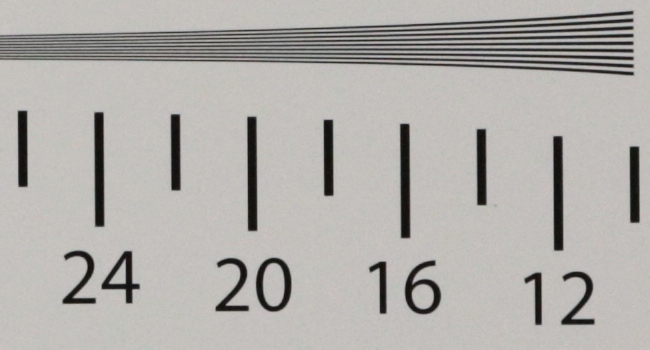 |
| Canon 5D MkIII, JPEG, 400 mm, f/5.6 |
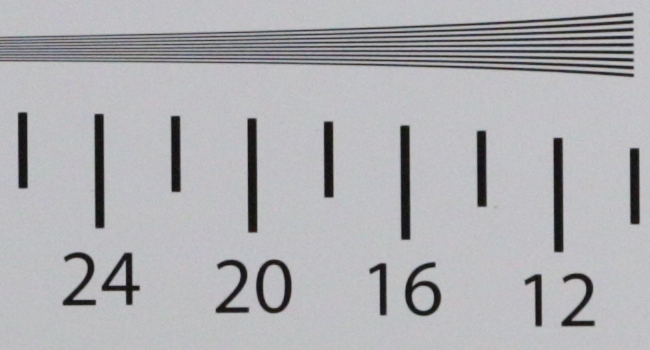 |
| Canon 5D MkIII, JPEG, 560 mm (TC), f/5.6 |
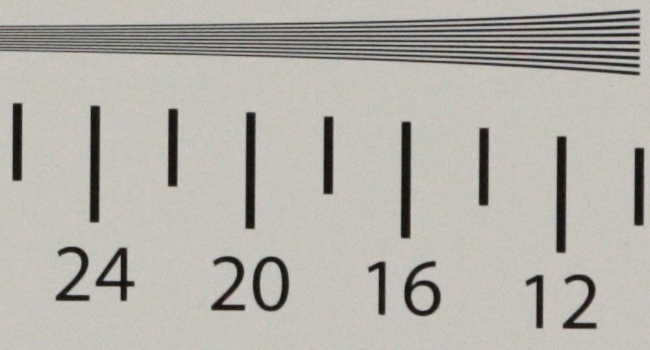 |






